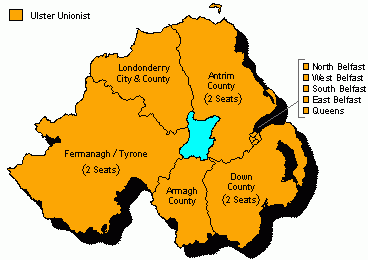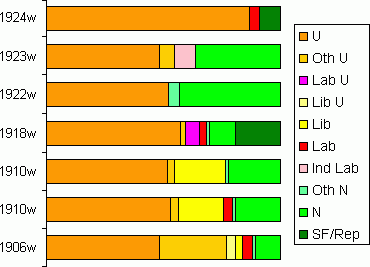

 |

|
| |
|
|
Monday April 7, 2025
|
In the campaign that followed Labour championed its modest achievements but four days before the election it fell victim to dirty tricks. The Daily Mail published a (forged) letter from Grigori Zinoviev, President of the Presidium of the Executive Committee of the Communist International (Comintern), calling for intensified communist agitation in Britain. The effect of the letter, while difficult to gauge, seemed to shake the public confidence in Labour. When the results came in, Labour had dropped 40 seats to 151, while the Conservatives under Stanley Baldwin were returned with 412 seats and a massive majority of 209. Asquith’s Liberals suffered a huge loss of 118 seats, a setback from which they never fully recovered.
In Northern Ireland one of the more significant issues during the election was the forward progress of the Boundary Commission. Following the Labour victory in 1923, the government moved forward with the establishment of the Boundary Commission provided for within the 1921 Anglo-Irish Treaty. Northern Ireland Prime Minister, William Craig, had refused to nominate a representative to the Commission but the government had introduced new legislation to allow them to appoint a Commissioner on their behalf just before the election.
Unlike the previous two elections, only three constituencies went uncontested: East Belfast, South Belfast, and Queens University. However, all out-going Unionist MPs were returned successfully and they also picked-up the remaining two seats from the Nationalist Party in Fermanagh and Tyrone. The Nationalist Party did not contest any seats in 1924, deferring to Sinn Fein who ran eight candidates but none were successful. One interesting event during the election was the arrest of Eamon de Valera at Newry Town Hall after defying an order preventing him from speaking in Northern Ireland in support of Sinn Fein election candidates. He was subsequently held in solitary confinement for a month in the Crumlin Road Gaol in Belfast.

This map by Conal Kelly shows
the winner in each constituency in 1924.
| Party | Votes | % Share | Seats Won | |
| Unionist | 451,278 | 86.9% | 13 MPs | (Antrim (2 seats), Armagh, East Belfast,
North Belfast, South Belfast,
West Belfast, Down (2 Seats), Fermanagh & Tyrone (2 seats), Londonderry and Queens University. |
| Sinn Fein | 46,457 | 8.9% | ||
| NILP | 21,122 | 4.1% | ||
| Independent Unionist | 517 | 0.1% |

Other sites based at ARK: ORB (Online Research Bank) | CAIN (Conflict Archive on the INternet) | Northern Ireland Life and Times Survey
Your comments, please! Send
an email to me at nicholas.whyte@gmail.com.
Conal Kelly, 10 October 2007.
|
|
Disclaimer:©
Nicholas Whyte 2005 Last Updated on Saturday, May 07, 2005 09:42:49
|